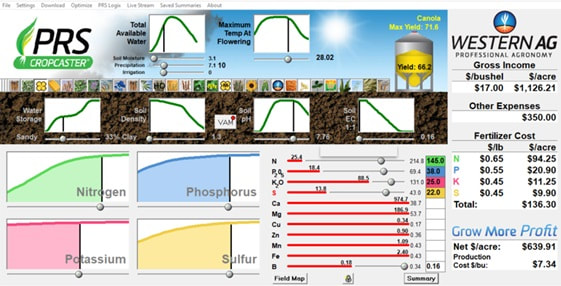|
Good Day, Here is a very interesting article on the “Birch affect” in regard to soil fertility levels and the impact dry soil conditions have on the availability and release of nutrients. The article is written by Edgar Hammermeister of Western Ag Professional Agronomy. I have worked with Edgar helping market his grain from the Alameda, SK area for 15 years. As we talked about crop production and soil fertility, I realized he had information every one needs to maximize profits. Take a read and let me or Edgar know what you think. It’s like déjà vu all over again. Yogi Berra As you receive this newsletter, harvest is likely well underway. The warm (to hot) and dry conditions have moved crops quickly into maturity. Across the prairies, there was significant variability in moisture available to start and grow the crop. The varying circumstances not only affects crop yield potential but also nutrient cycling in the soil and can have a large impact on future fertilizer management if it is accounted for. When soils go through extended periods of drying, there are some physical and biological changes that occur. These changes can result in a nitrogen (N) mineralization potential to build and release, a process sometimes referred to as the “Birch Effect”. The greater the organic carbon content of the soil and the longer the dry period, the greater the potential for plant available N to release once a drought ending rain occurs. The potential for N release can range from tens of pounds to over 200 lb/ac depending on what soil zone you are farming in and the condition of your soil. The N mineralization burst is difficult to predict with conventional soil testing. As a result, it has not been talked about much. The conventional residual soil nitrate test measures just that… residual nitrate. It extracts the “left over” or residual nitrate-N and does NOT account for the organic N supply often referred to as “mineralization”. When soils go through drought, the biology shuts down and no N mineralization takes place. If the crop yield was good to average and a dry fall persists, a conventional soil test will read low in nitrate-N because the plants have drained the nitrate-N pool and mineralization of organic N has not yet replenished this nitrate-N pool. Western Ag Professional Agronomy uses the Plant Root Simulator (PRS®) probe technology to measure the nutrient supply power of the soil and a sophisticated computer model, the PRS® CropCaster, to interpret the probe data. The PRS® lab protocol for dry soils, triggers the Birch Effect in the lab and the PRS® analysis is able to measure the plant available N supply power. In the 25 years of CropCasting, the last three years have been some of the most interesting. The dry fall of 2020 saw Western Ag customers significantly reduce N application rates planned for the 2021 crop. No one anticipated the drought, but farmers using PRS CropCasts, did not see the same high soil residual nitrate tests… because the fertilizer N wasn’t in the soil to begin with. The N was safe in the bin, it was better for the environment, and, most of all, it was better for the pocket book. The fall of 2022 showed the same trend, planning for crop year ‘23. There were high N supply rates allowing for reduced N applications at seeding. Should dry conditions persist into the fall, what am I anticipating for the fall of 2023? We have seen this before. Ask any Western Ag Professional Agronomist or farmer customer about how the PRS® CropCaster can compare “What if” scenarios based on changing crop type, fertilizer, weather and economics and help you “Grow More Profit”. https://www.youtube.com/watch?v=LdFSAQmzsZ0 Edgar Hammermeister, PAg C 306-483-7289 [email protected] www.GrowMoreProfit.com Edgar Hammermeister is a Professional Agrologist and a Western Ag franchise owner located in South East Saskatchewan. He has been providing crop planning services for area farmers since 1998 when the PRS technology first became commercially available for use. Western Ag has over 35 agronomists situated throughout Saskatchewan and Manitoba. The Western Ag PRS CropCasting® service includes soil sampling, lab analysis, cropcasting and a post harvest review called “backcasting”. Hope you all found this as interesting as we have. Let me or Edgar know what you think
Till next month, Richard Chambers Marketer - Brandon, MB 204-729-1354 - Office 204-761-8320 - Cell [email protected]
0 Comments
Your comment will be posted after it is approved.
Leave a Reply. |
AuthorReed McDonald - Owner and chief blogger at Quality Grain Marketing. With all the noise and click bate headlines this agricultural based blog will highlight what current events I am following. Be sure to check in regularly for updated musings Archives
July 2024
|


